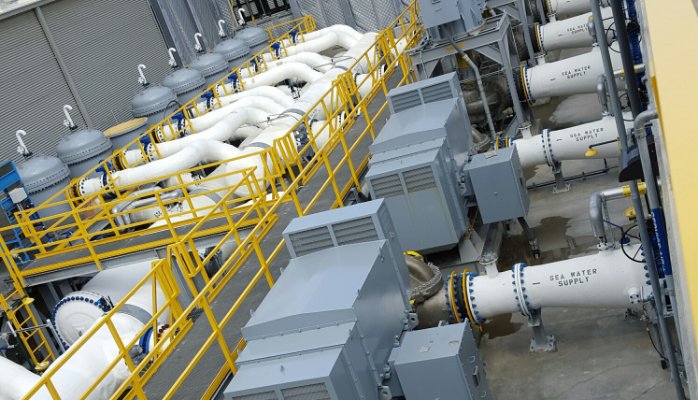As someone interested and somewhat involved in water in the Southern California region, I am often asked “why don’t we just build a bunch of desalination plants to solve our water crisis?” As you may realize by the end of this article, cost is the number one reason. It is a tremendous undertaking to build a desalination plant. It takes years of planning and execution, hundreds of millions of dollars to build – then it must be operated and maintained. The end result in cost to the consumer is about triple the average cost per gallon. While I think this is a welcome addition to the diversity of water sources in San Diego, we should not lose sight of other ways to meet our needs. Most countries and many of our United States treat grey and black water, turning it to drinking water safely and effectively, and at a fraction of the cost of desalination. A change is needed in California regulations to meet our needs.
In the meantime, we have a new desalination plant to help us along our journey to water diversity in San Diego.
As you may be aware, this desalination plant began construction in 2012 and was first operational in November of 2015. The plant is designed to have a maximum operating capacity of 50 million gallons per day (MGD) of drinking water to San Diego. At capacity the plant brings in 100 MGD of sea water through it’s 72″ FRP intake pipe to produce the 50 MGD of drinking water – a 2:1 ratio isn’t bad for an RO process. The balance of the brine is treated and returned to the ocean.

This is one of the 2,000 RO (reverse osmosis) filters that is used to filter the sea water. Below is a top view where you can see the many layers the water is pushed through the filter at a high pressure, which is effective but also energy intensive (approximately 5000 kWh per acre foot of water). The stated brine discharge is put back into the ocean at about 200 ppm, significantly less than the sea water average according to the US Coast Guard, which is about 35,000 ppm.
The plant has an energy recovery system installed, that offsets 46% of the energy needed by the energy intensive RO process. This energy recovery saves an estimated 146 million kWh of energy per year, reducing green house gas emissions by 42,000 metric tons.
The filter room houses 2,000 of these filters, working around the clock.
Once this process is completed, the pH of the water is rather high, so the water is put through 12′ beds of limestone to bring the pH levels down. The finished water is discharged though 54″ pipe, through a venturi metering device to measure flow, then pumped to the Twin Oaks Plant in San Marcos where it is mixed with other drinking water and stored for distribution.
Just like any other water facility, sampling occurs regularly to check for pH, purity, chlorine, fluoride, etc. to ensure public safety. I was able to drink some of the water while there, and it tasted great!
Not part of the tour but a point of interest for me, was inside the office building. I found a length of pipe that was signed by the fitters who worked on the project. As you might imagine, there are miles and miles of pipe.
Some were proudly signed with “230” by their name, denoting our local steamfitter union, LU230. To the brothers and sisters of local 230 and other locals that worked on the project- you did a fantastic job. The plant is a wonder of skill and engineering, a welcome addition to San Diego.
If you get an opportunity to see the plant first hand, I highly recommend it. Thank you to the San Diego County Water Authority for access, tour, and information.









